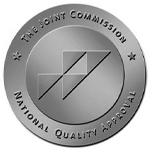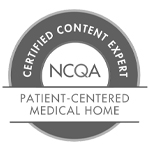 With the warmer season upon us, many of us will be spending a lot of time outdoors. Warmer weather also means we have to be vigilant in the safety of ourselves as well as those around us, particularly children. Angie Wallace, Certified Registered Nurse Practitioner at Keystone Pediatrics Waynesboro, shares a few ways to stay healthy and reduce the risk of harm.
With the warmer season upon us, many of us will be spending a lot of time outdoors. Warmer weather also means we have to be vigilant in the safety of ourselves as well as those around us, particularly children. Angie Wallace, Certified Registered Nurse Practitioner at Keystone Pediatrics Waynesboro, shares a few ways to stay healthy and reduce the risk of harm.
Sun Safety
What are some tips to avoid sunburn?
There are several ways to reduce risk for sunburn. Recommendations include avoiding sun exposure during peak hours (10 a.m. to 4 p.m. in the summer months), applying sunscreen, and wearing sun-protective clothing such as long sleeves, long pants, broad brim hats and sunglasses.
Sunscreen of SPF 30 or greater is recommended for everyone 6 months and older. The American Academy of Pediatrics recommends avoiding sunscreen use for infants less than 6 months of age. However, if shade is not available, a small amount of sunscreen of SPF 15 or higher may be applied to small areas such as the face and the back of hands. Sunscreen should be applied 15-30 minutes prior to sun exposure and should be reapplied every two hours during times of exposure. The sunscreen should not be expired or more than 3 years old. Avoiding tanning beds is also recommended.
How can you treat sunburn?
Sunburn usually heals within a few days. Ways to relieve pain and discomfort include cool compresses or soaks, calamine lotion or aloe vera-based gels, as well as taking oral nonsteroidal anti-inflammatory drugs (NSAIDs) such as Ibuprofen. Severe sunburn causing blistering or symptoms such as nausea, vomiting, headache, and/or fever should be evaluated by a Primary Care Provider.
What are the signs of a heatstroke?
Heatstroke is a condition that can occur if a person’s body gets too hot. This is a medical emergency and needs to be treated quickly. Symptoms of heatstroke include a body temperature of 104 degrees F or higher, confusion, hallucinations, trouble walking, seizures or fainting. Other symptoms include fast breathing or fast heart rate, vomiting or diarrhea, skin redness, muscle cramps or weakness and/or headaches.
What should you do to avoid heatstroke?
Caution should be taken not to be outside during very hot weather or to take frequent breaks. Exercise during the mornings or evenings when temperature is cooler, stay hydrated with water or a sports drink, wear loose and lightweight clothing and avoid being in a hot car. NEVER leave a child or pet in a hot car.
What should you do if you suspect someone is having a heatstroke?
If there is concern for heatstroke, you should call 911. Ways to cool a person’s body include moving them into the shade, spraying them with cool water and sitting them in front of a fan, giving them a cool shower or bath, having them drink water or a sports drink, taking off extra clothing and placing a cool cloth on their neck and armpits.
Pool Safety
What can you do to keep children safe in the pool?
Drowning is the leading cause of death in children 1-4 years of age, usually occurring in a pool. Therefore, it is extremely important to avoid being distracted when children are in or around water. Young children should always be within arm’s reach and it is recommended older children have a swim partner. Teaching children how to swim through swim lessons will also reduce their risk of drowning. Children who are unable to swim on their own should wear a U.S. Coast Guard-approved personal flotation device. This does not include water wings or noodles.
Children should not be able to get into a pool on their own. A fence at least 4 feet high should be around a pool, and a door alarm can be placed on a door leading to the area. “Baby pools” should be emptied and placed upside down when not in use. Adults and older children should learn CPR – education that can provide any parent a bit of peace of mind and is a life-saving skill in a time of need.
What water safety tips should you teach children?
Children should receive swim lessons so they can learn to tread water, float, and stay close to shore when in open water. Children should know that diving is only allowed in areas designated for this due to risk of head, neck and spine injury. Children should be taught it is unsafe to swim near water drains or suction areas as they can become caught by these.
This article contains general information only and should not be used as a substitute for professional diagnosis, treatment or care by a qualified health care provider.




